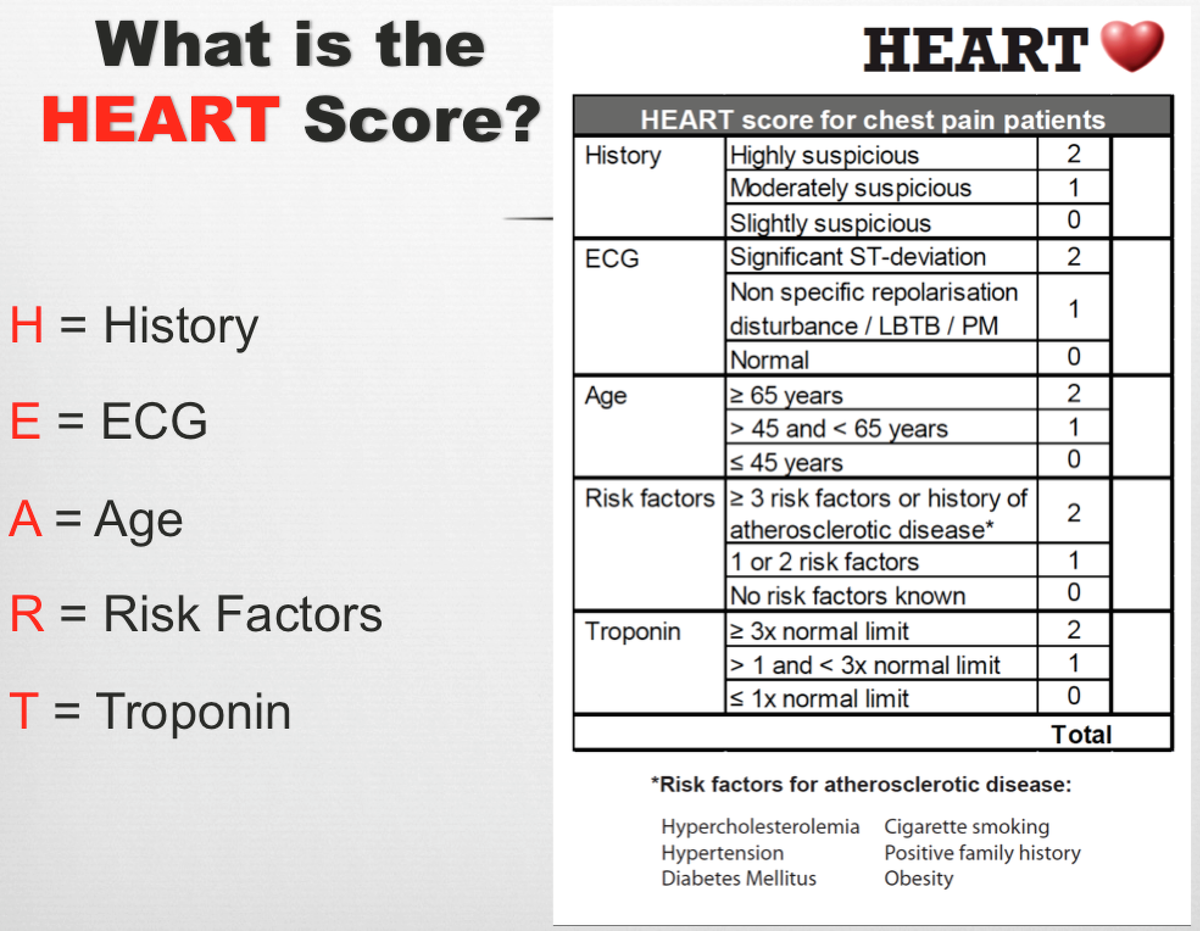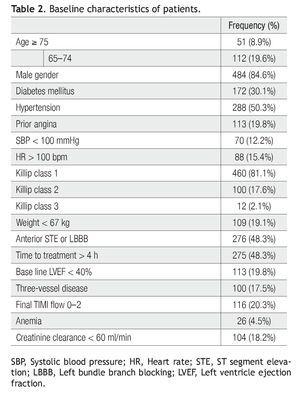
The TIMI risk score is a simple prognostication scheme that categorizes a patient's risk of death and ischemic events and provides a basis for therapeutic decision making. The event rates was significantly lower in the enoxaparin groups in both TIMI 11B (P =.01) and ESSENCE (P =.03).The pattern of increasing event rates with increasing TIMI risk score was confirmed in all 3 validation groups (P2% for a score of 3, 19.9% for a score of 4, 26.2% for a score of 5, 40.9% for a score of 6/7. Event rates increased as the TIMI risk score increased 4.7% for a score of 0/1, 8.3% for a score of 2, 13.The 7 TIMI risk score predictor variables were: age ≥ 65, at least 3 risk factors for CAD, prior coronary stenosis of ≥50%, ST-segment deviation on ECG at presentation, at least 2 anginal events in prior 24 hours, use of aspirin in prior 7 days, and elevated serum cardiac markers.To develop a simple risk score that has broad applicability, is easily calculated at patient presentation, does not require a computer, and identifies patients with different responses to treatments for UA/NSTEMI.
#TIMI SCORE FOR NON STEMI TRIAL#
N = 15 were assigned respectively in ESSENCE trial.N = 1957 patients with UA/NSTEMI were assigned to receive unfractionated heparin (test cohort) and 1953 to receive enoxaparin in TIMI 11B trial.Left ventricular ejection fraction was an independent predictor of TIMI-STEMI risk score. Patients and give this a Class IA, Level of Evidence A recommendationĪnalysis of two Phase 3, International, Randomized, Double-Blind trials (TIMI 11B and ESSENCE) The NLR, platelet distribution width (PDW) and uric acid level (UA) were significantly associated with a high TIMI-STEMI risk score (p 0.016, p 0.008, p 0.030, respectively), but PLR was not associated with a high TIMI-STEMI risk score. This highlights the importance of further admission and testing, or veryįor NSTEMI say that risk scores should be used to assess the prognosis in Risk within the first 14 days of presentation. Risk scores also had better outcomes if treated with enoxaparin versusĮven patients with the lowest TIMI risk score (0 - 1) are still at concerning Myocardial Infarction (NSTEMI) and unstable angina (UA). In event rates with higher TIMI risk scores It includes patients with ST-Elevation Myocardial Infarction (STEMI), Non ST-Elevation. Their risk for cardiac related ischemic events and death within the first 14 2000 284 (7): 835-42.Easy bedside calculation mostly based on the patient's medical history and aįew initial tests (ECG and initial labs) in patients presenting to theĮmergency department (ED) with unstable angina or NSTEMI when trying to assess The TIMI risk score for unstable angina/non-ST elevation MI: A method for prognostication and therapeutic decision making. TIMI risk score accurately risk stratifies patients with undifferentiated chest pain presenting to an emergency department. Application of current guidelines to the management of unstable angina and non-ST-elevation myocardial infarction. TIMI risk score for ST-elevation myocardial infarction: A convenient, bedside, clinical score for risk assessment at presentation: An intravenous nPA for treatment of infarcting myocardium early II trial substudy. Morrow DA, Antman EM, Charlesworth A et-al. female first-degree relative or mother younger than 65 yearsĪ percentage risk at 14 days of all-cause mortality, new or recurrent myocardial infarction, or severe recurrent ischemia requiring urgent revascularization.male first-degree relative or father younger than 55 years.

family history of premature coronary artery disease.



 0 kommentar(er)
0 kommentar(er)
